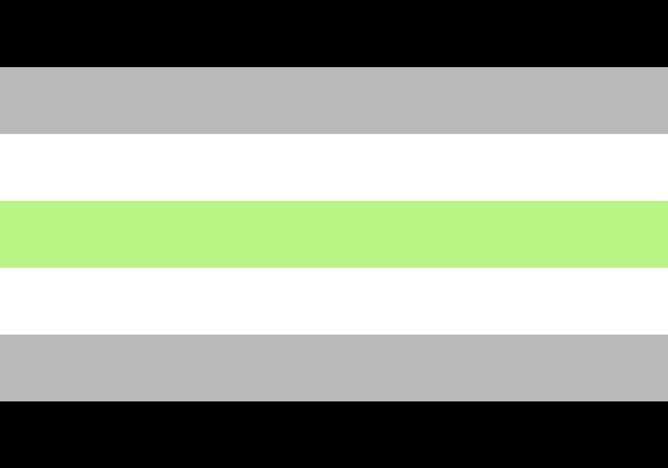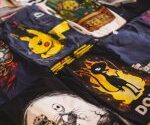Sexuality Flags & LGBT+ Symbols: The Ultimate Guide
We all know the famous rainbow flag that represents gay pride. There are, however, many flags recognized among the LGBTQ+ community to symbolize the wide range of sexual orientations and gender identities.
Why are there so many LGBTQ and gender flags and meanings to stand for the specific groups of the community?
Monica Helms, the creator of the Transgender Pride Flag, probably phrased it best when she said, “I say the rainbow flag is like the American flag: everybody’s underneath that. But each group, like each state, has their own individual flag.”
So, why are flags so symbolic of the movement? The creator of the first rainbow Gay Pride Flag, Gilbert Baker, said, “Flags say something. You put a rainbow flag on your windshield and you’re saying something.”
You can buy ready-made gender identity flags to showcase your pride in the LGBTQ+ community, or you can create your very own custom flag and pennant string flags on Vispronet. Also check out our autism pride flag for LGBTQ+ members on the spectrum.
For a Pride flags list of all sexuality flags and gender flags included in the LGBTQ+ community, which are often showcased at their parades and events, check out all LGBTQ flags and names in the chart below.
List of LGBTQ Flags, Symbols, & Meanings
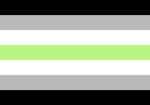 |
Agender Pride Flag Read More |
People who identify as not having a gender |
 |
Ally Flag Read More |
Straight and cisgender people who support LGBTQ+ rights |
  |
Androgynous Pride Flag Read More |
People who identify as a combination of male and female |
 |
Aromantic Pride Flag Read More |
People who may experience sexual attraction, but not romantic attraction to others |
 |
Asexual Pride Flag Read More |
People who experience no (or little) sexual attraction to others |
 |
Bear Pride Flag Read More |
Subculture of gay men who have facial and body hair |
 |
Bigender Pride Flag Read More |
People who identify as both male and female and might go between the two genders or combine them |
 |
Bisexual Pride Flag Read More |
People who are attracted to two or more genders |
 |
Butch Lesbian Flag Read More |
Lesbians who have more masculinity personality traits |
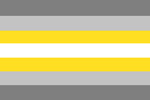 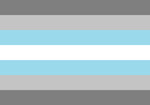  |
Demigender Pride Flag Read More |
People who identify as non-binary, but can sometimes relate to a gender, also known as “half gender”. There are also flags for partly male (demiboys) and partly female (demigirls) genders |
 |
Demisexual Pride Flag Read More |
People who feel sexually attracted to someone only when they are in love |
 |
Drag or Feather Pride Flag Read More |
Flag trademark for the drag community |
 |
Drag Pride Flag Read More |
Alternate symbol for drag king and queen community |
 |
Gay Pride Flag Read More |
Traditional symbol for the entire LGBTQ+ community and gay men |
 |
Genderfluid Pride Flag Read More |
People who identify their gender as moving from one to another rather than having a set gender |
 |
Genderflux Pride Flag Read More |
People whose gender identity changes over time |
 |
Genderqueer Pride Flag Read More |
Umbrella term for people who identify with non-binary genders |
 |
Gender Questioning Pride Flag Read More |
People still trying to figure out what gender they identify as |
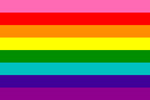 |
Gilbert Baker Pride Flag Read More |
The original flag symbol for the gay pride movement |
 |
Graysexual Pride Flag Read More |
People who fall somewhere between asexual and sexual, but do not want to be defined as specifically asexual |
 |
Hijra Pride Flag Read More |
South Asian culture of gender non-conforming people led by a guru |
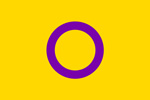 |
Intersex Pride Flag Read More |
People who were born with sex characteristics that were not completely binary |
 |
Intersex Progress Pride Flag Read More |
The newest version of the progress pride flag representing those who are intersex, people of color, and AIDS victims |
 |
Labrys Lesbian Pride Flag Read More |
An alternative version of lesbian pride flags |
 |
Leather Pride Flag Read More |
Popular flag for the leather subculture and other fetish groups |
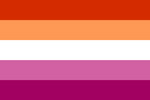 |
Lesbian Pride Flag Read More |
Pride flag representing the whole lesbian community |
 |
Lipstick Lesbian Pride Flag Read More |
Flag for lesbians who have more feminine personality traits |
 |
Maverique Pride Flag Read More |
People who identify with a gender, but it is different from the male and female binary |
 |
More Color More Pride Flag or Philadelphia Pride Flag Read More |
The traditional gay pride flag with black and brown stripes added to represent people of color |
 |
Neutrois Pride Flag Read More |
People who identify as gender neutral |
 |
Non-Binary Pride Flag Read More |
People who do not identify with the male-female gender binary |
 |
Omnisexual Pride Flag Read More |
People who are attracted to others of all genders |
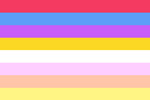 |
Pangender Pride Flag Read More |
People who identify as all or many genders |
 |
Pansexual Pride Flag Read More |
People who are attracted to others regardless of what gender they identify as |
 |
Pocket Gender Pride Flag Read More |
A small group of people who identify with a gender that is not part of the LGBTQ+ community |
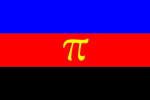 |
Polyamorous Pride Flag Read More |
People who are in a consenting relationship with more than one person at the same time |
 |
Polysexual Pride Flag Read More |
People who are sexually attracted to more than two genders, but not all the genders |
 |
Progress Flag Read More |
Updated design of the traditional pride flag to include the Philadelphia Pride Flag and the Transgender Pride Flag colors |
 |
Rubber Pride Flag Read More |
Symbol for the rubber kink community |
 |
Trans Pride Flag or Transgender Pride Flag Read More |
People who do not identify with the gender they were assigned to when they were born |
 |
Trigender Pride Flag Read More |
People who identify with three genders either at the same time or by moving from one to another |
 |
Twink Pride Flag Read More |
Gay subculture of men who are young and hairless |
 |
Two-Spirit Pride Flag Read More |
Symbol of Native American culture to represent people who have a male and female spirit and therefore experience life from the view of the binary genders |
Agender Flag
Agender Pride Flag Meaning
This black, white, gray, and green pride flag was created by Salem X and was first seen on Tumblr in February 2014. The agender flag sports a green stripe, because green is the opposite of purple, which is a color that strongly relates to gender due to it being a combination of the traditionally masculine blue and feminine pink. Green, on the other hand, is seen as a genderless color. Agender Pride Flags are designed to be reversible, like other LGBTQ+ flags such as the Transgender Pride Flag, so that the stripes will be in correct order no matter which way they fly.
Black and White Stripes: Genderlessness
Gray Stripes: Those who are semi or demi genderless (people who fall between genderless and gendered)
Green Stripes: Non-binary gender identities
Ally Flag

Ally Flag Meaning
While this black and white/rainbow flag has an unknown origin, it first turned up around the late 2000s. This should not be confused with the strictly black and white “straight pride” flags that have occasionally turned up. The Ally flag represents support for the LGBTQ+ community and celebrates the sexualities of others, while the “straight pride” flag negatively protests the Pride movement.
“A”: Allies
Rainbow: LGBTQ+ community
Black and White Stripes: Straight and cisgender people
Androgynous Flag
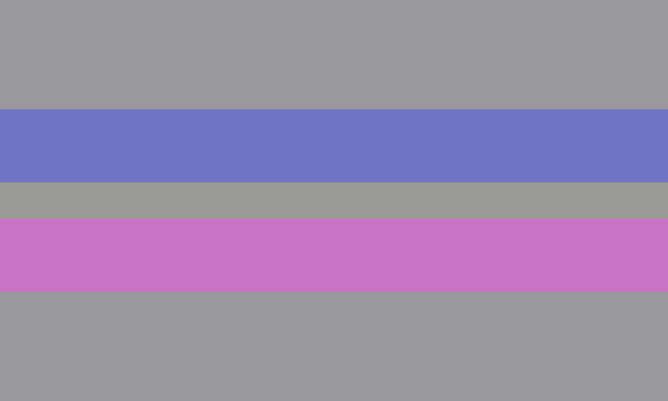
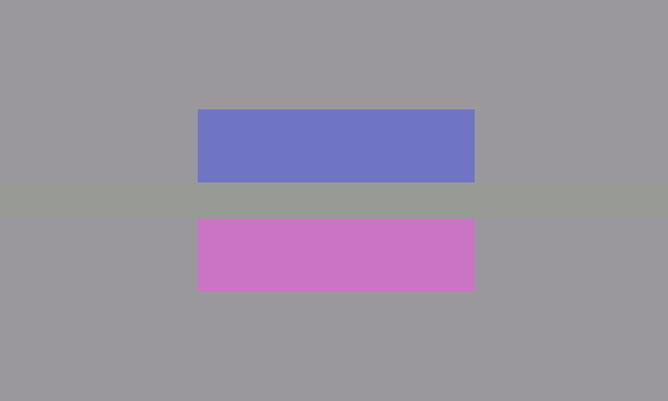
Androgynous Pride Flag Meaning
The flag on the left is reminiscent of the rainbow style Gay Pride Flag, while the one on the right looks more like an equal sign to represent equal rights and is referred to as Androgynous Equal Pride Flag. For both gray, blue, and pink flags, the colors represent the same meaning.
Blue Stripe: Masculinity
Pink Stripe: Femininity
Gray: The “gray area” that is between the two binary genders
Aromantic Flag
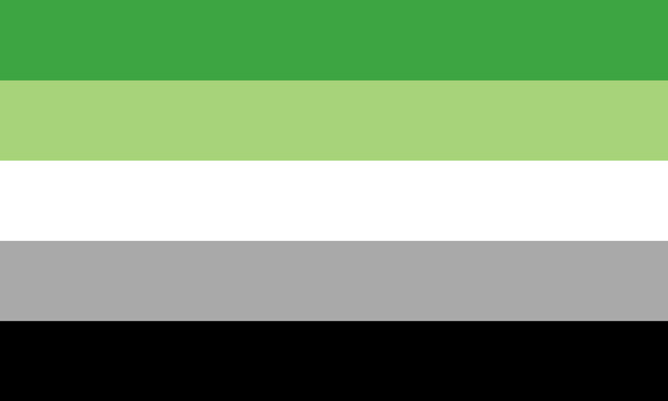
Aromantic Pride Flag Meaning
The green, white, gray, and black flag has gone through several designs. Its first version came from an unknown source and had four green, yellow, orange, and black stripes. The second layout of the flag had five stripes that were dark green, light green, yellow, gray, and black. It was created by the Tumblr user @cameronwhimsy. Cameron is also credited with creating the third and final design, which uses a white stripe instead of a yellow one.
Dark Green Stripe: Aromanticism
Light Green Stripe: The aromantic spectrum, which ranges from low to nonexistent levels of romantic feelings
White Stripe: Platonic and aesthetic attraction on the aromantic spectrum (Platonic is an attraction to a friend in a non-physical way and aesthetic is finding someone attractive without feeling romantic towards them)
Gray Stripe: Gray-romantic and demi-romantic people (people who are between aromantic and romantic feelings)
Black Stripe: The sexuality spectrum
Asexual Flag
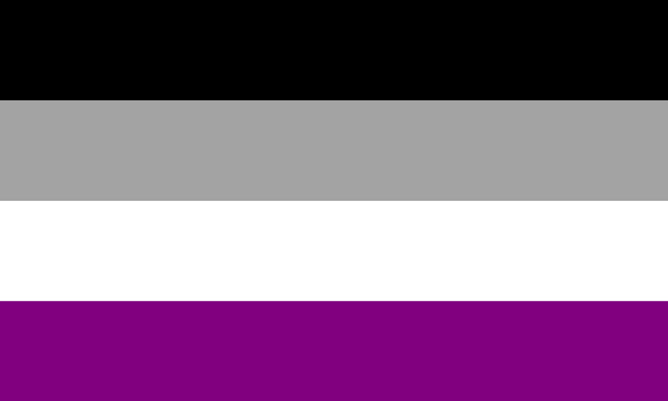
Asexual Pride Flag Meaning
The black, gray, white, and purple flag for asexuality was designed to replicate the logo of The Asexual Visibility and Education Network (AVEN). This asexual flag was created by a member of the network in 2010 for a contest on their forum boards.
Black Stripe: Asexuality
Gray Stripe: People who identify as gray-asexual and demi-asexual (people who fall between asexuality and sexuality)
White Stripe: The non-asexual partners and supporters of people in the community
Purple Stripe: The asexual community as a whole
Bear Flag
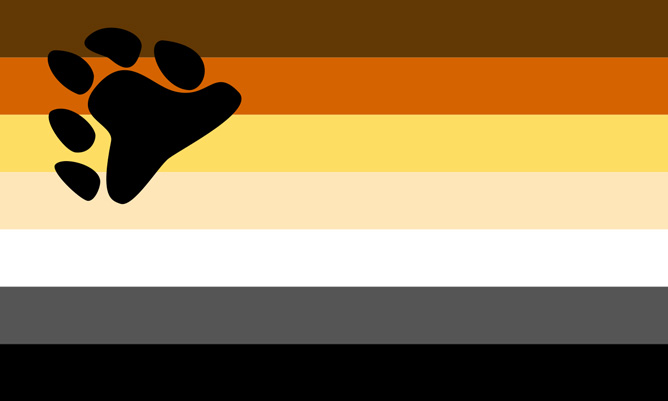
Bear Pride Flag Meaning
This colorful flag was designed by Craig Byrnes for the International Bear Brotherhood in 1995. The brown and black flag is also known as the International Bear Brotherhood Flag. Byrnes created the flag when he was studying the bear subculture for his psychology degree. Four versions of the design were made and voted on by the members of the community. The modern design was the winner of the poll. This flag, however, has a different meaning compared to other sexuality flags since each color stripe does not represent a part of the community. Instead, the varying brown, white, and black stripes are the colors of literal fur from the bear animal, like grizzly and polar bears.
Bigender Flag
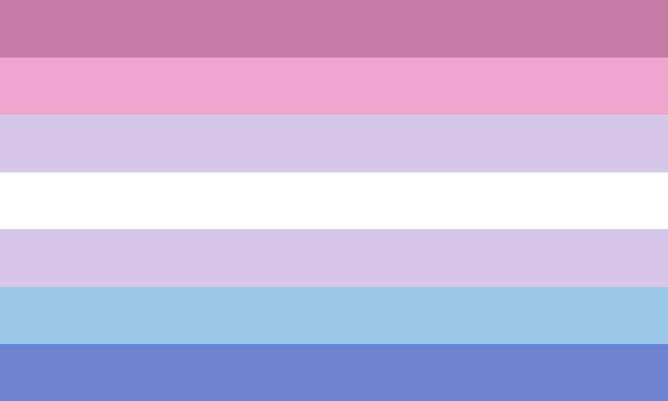
Bigender Pride Flag Meaning
This pink, purple, white, and blue Pride flag represents different gender identities, with the white stripe in the middle inspired by the Transgender Pride Flag.
Pink Stripes: Femininity
Purple Stripes: Combination of male and female genders
White Stripe: Non-binary genders
Blue Stripes: Masculinity
Bisexual Flag
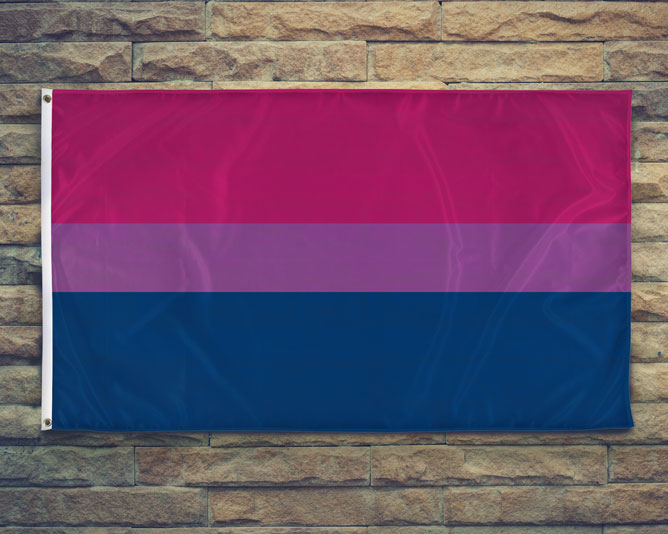

Bisexual Pride Flag Meaning
The pink, purple, and blue flag was created by bi-rights activist Michael Page in 1998. Page created the flag so that the bisexual community could have more visibility in the culture rather than just the rainbow flag. The blue, purple, and pink flag was revealed on the first anniversary of an early website for the bisexual community called BiCafe. Page described the meaning behind his flag as, “The key to understanding the symbolism of the Bisexual Pride Flag is to know that purple pixels of colors blend noticeably into both the pink and blue, just as in the ‘real world,’ where bi people blend unnoticeably into both the gay/lesbian and straight communities.”
Using the signature pink, purple, and blue color hues has grown in pop culture. For instance, there is a term known as “bisexual lighting”. This is a lighting technique in films and music videos, ranging from the blockbuster film, Black Panther, to the video for the song “Make Me Feel”.
Pink: Attraction to people of the same gender
Purple: Attraction to two or more genders
Blue: Attraction to people of a different gender
Butch Lesbian Flag
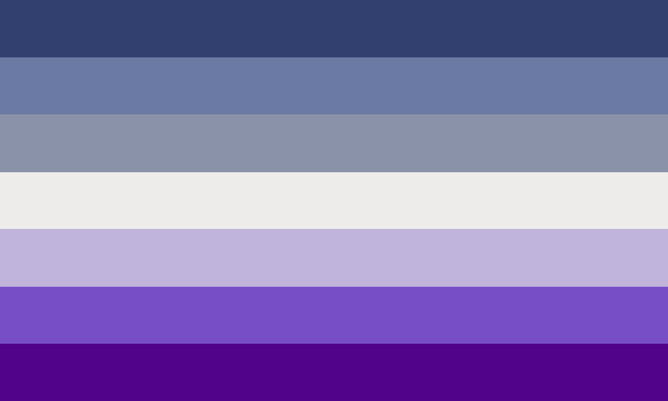
Butch Lesbian Pride Flag Meaning
Prior to this flag, lesbians who fell under the “butch” category did not feel represented by the more feminine Lipstick Lesbian Flag and the lightly colorful Lesbian Pride Flag. This flag was created in the style of the Rainbow Pride Flag and the Lesbian Pride Flag, but with darker, more “masculine” colors as an alternative to the lighter feminine colors of the original. The color scheme, therefore, has more of a singular meaning rather than each color having its own individual definition.
Demigender Flag
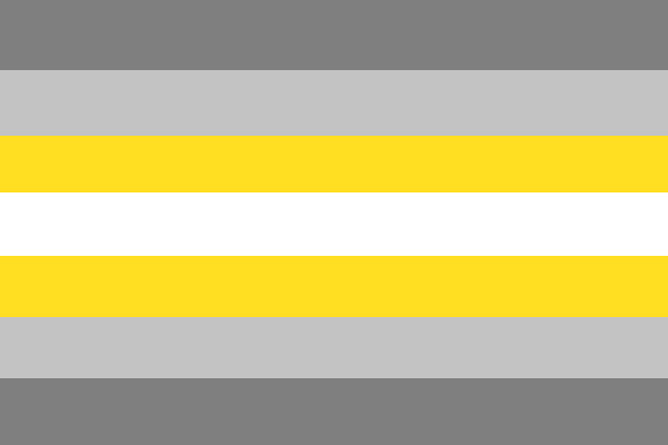
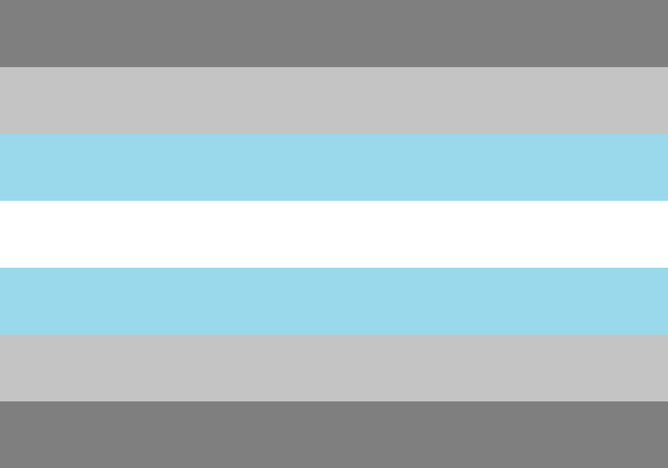
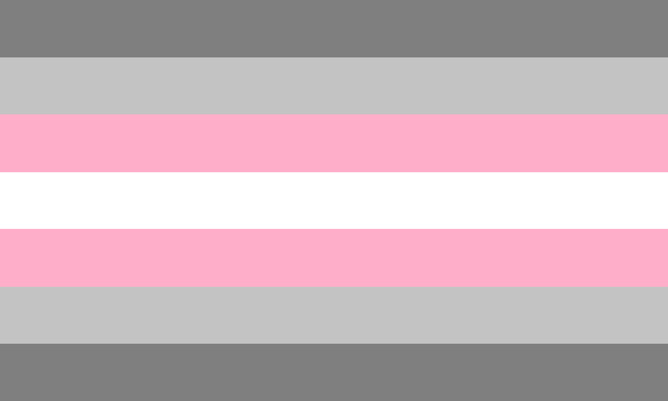
Demigender Pride Flag Meaning
There are three versions of the Demigender Pride Flag, one with a gray and yellow color scheme, one with gray and blue, and another with gray and pink. The blue version of the flag represents “demiboys”, which are people who identify somewhat with the male gender. Similarly, the pink flag is for “demigirls” for people who relate more closely to the female gender, but not completely. The main grey and yellow one, therefore, is a more gender-neutral design since the yellow color represents non-binary genders.
Demisexual Flag
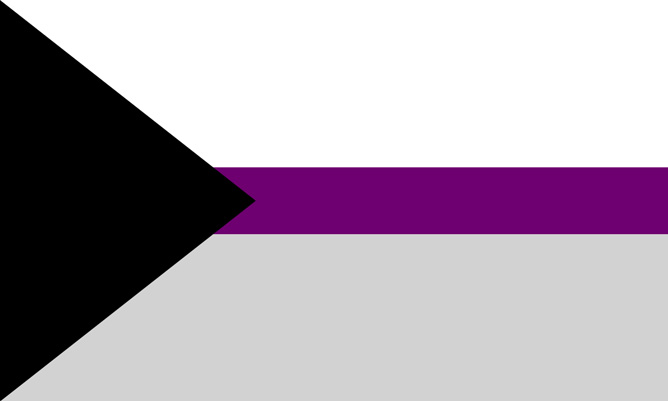
Demisexual Pride Flag Meaning
This black, white, purple, and gray flag represents part of the asexual community; therefore, it uses the same colors of the Asexual Pride Flag, but in a different design. The colors, however, have the same meaning as the Asexual flag.
Black Arrow: Asexuality
Gray Stripe: People who identify as gray-asexual and demi-asexual (people who fall between asexuality and sexuality)
White Stripe: The non-asexual partners and supporters of people in the community
Purple Stripe: The asexual community as a whole
Drag/Feather Flag
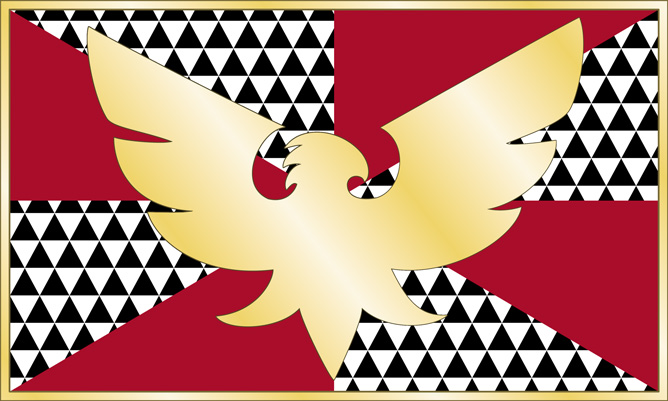
Drag/Feather Pride Flag Meaning
Graphic design artist Seam Campbell, who is also responsible for the Labrys Lesbian Flag, designed the Drag Pride Flag in 1999. This flag does not use the more traditional rainbow style design that other Pride flags use as inspiration.
Phoenix or Firebird: The rebirth of the LGBT+ community (phoenixes are mythical animals that can be reborn) or the “fires of passion” associated with the drag culture when they fundraised for the HIV and AIDS pandemic
Drag Flag
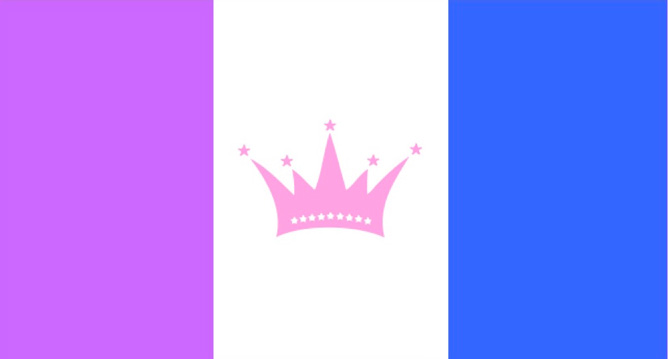
Drag Pride Flag Meaning
This purple, white, and blue flag is an alternative to the Feather Pride Flag for the drag community. The flag won a 2016 contest held by the Austin International Drag Foundation to create a flag that was representative of drag kings and queens. It was designed by Veranda L’Ni, who assigned meanings to the different colors and the crown symbol.
Purple Stripe: The passion for drag
White Stripe: “The blank slate that is our bodies and face and that we all change to create the characters that we become.”
Blue Stripe: Loyalty to the community and their self-expression
Crown: The leadership the drag culture takes in the LGBT+ community
Stars: The different forms of drag
Gay Pride/Rainbow Flag
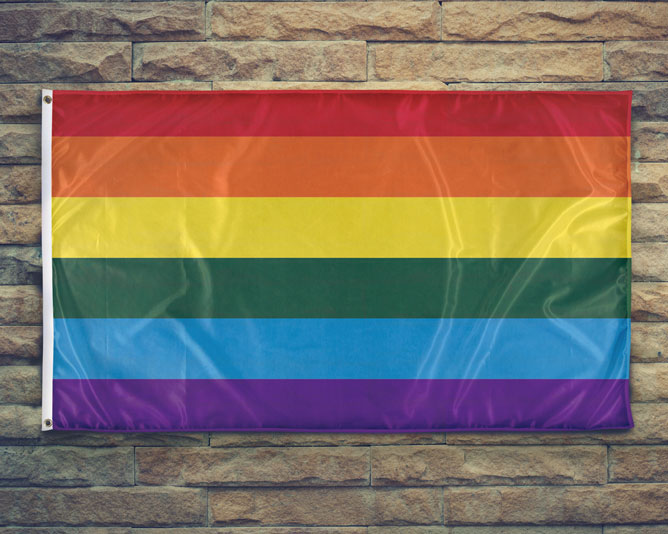

Gay Pride/Rainbow Flag Meaning
The quintessential six-stripe Gay Pride Flag is derived from the original Pride flag design created by Gilbert Baker. Like Baker’s original design, the colors have their own separate meanings. This flag is meant to represent the entire Pride community, in addition to being the main flag for gay men. People commonly display the flag during Pride month in shops, on porches, and in front of buildings. You can buy your very own Rainbow Pride Flag here.
Red Stripe: Life
Orange Stripe: Healing
Yellow Stripe: Sunlight
Green Stripe: Nature
Blue Stripe: Harmony/Peace
Purple Stripe: Spirit
Genderfluid Flag
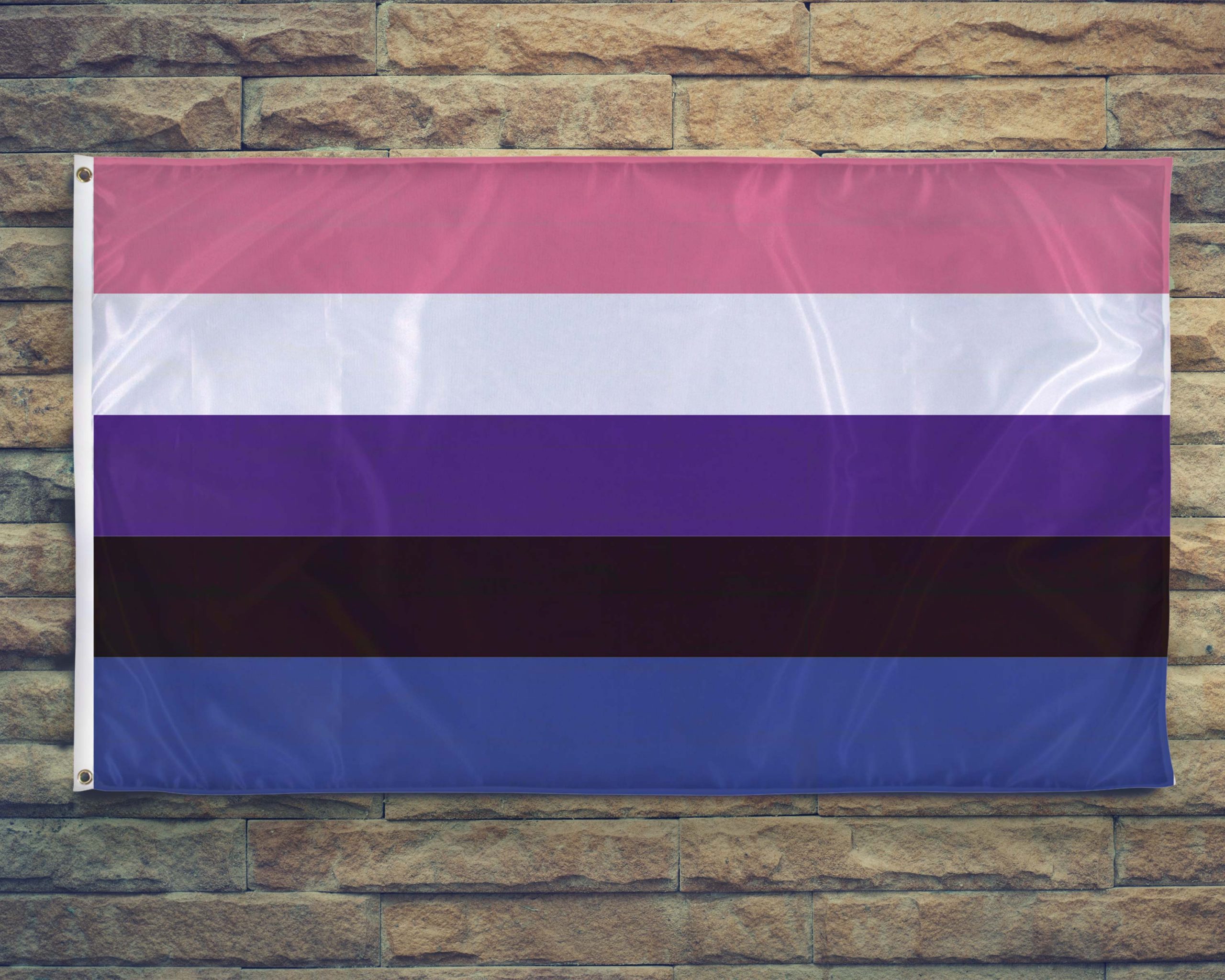

Genderfluid Pride Flag Meaning
This pink, white, purple, black, and blue flag was created by artist JJ Poole in 2012. Poole recalled, “I made a couple of flags actually, but this one I submitted to a blog on Tumblr about genderfluidity and genderfluid people. It had a big following at the time. And they loved it. And it took off.” It is believed that Poole created the flag so that the genderfluid community could have a symbol other than the genderqueer flag.
Pink Stripe: Femininity
White Stripe: All genders
Purple Stripe: Combination of masculinity and femininity
Black Stripe: Genderlessness
Blue Stripe: Masculinity
Genderflux Flag
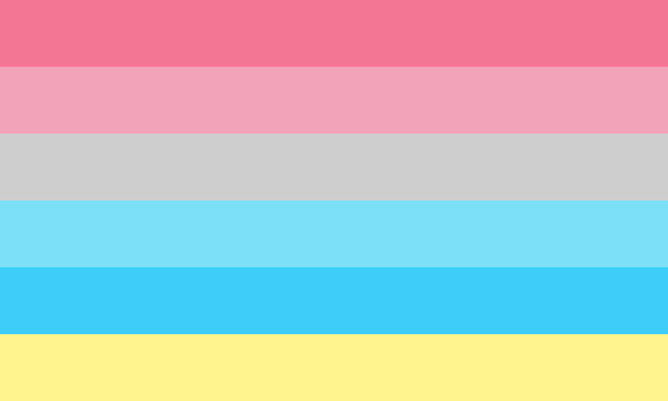
Genderflux Pride Flag Meaning
The Genderflux Pride Flag includes pink, gray, blue, and yellow stripes, with two versions of the pink and blue colors.
Dark Pink Stripe: Femininity
Light Pink Stripe: Demigirl (someone who identifies more with the female gender, but not completely)
Grey Stripe: Agender
Light Blue Stripe: Demiboy (someone who identifies with the male gender, but not completely)
Dark Blue Stripe: Masculinity
Yellow Stripe: Non-binary gender
Genderqueer Flag
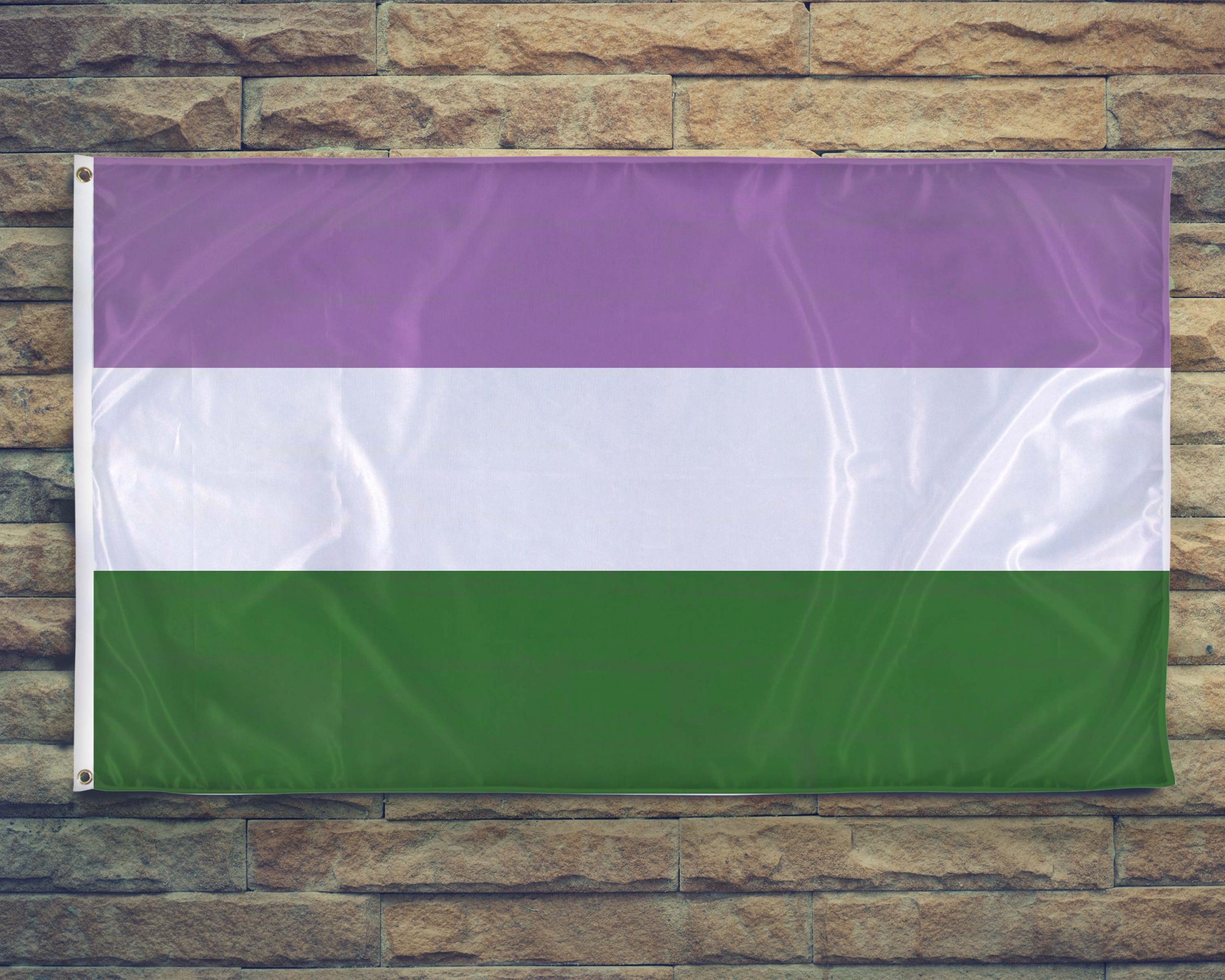

Genderqueer Pride Flag Meaning
The purple, white, and green Genderqueer Flag is another popular sexuality flag. Genderqueer includes the word “queer”, which was usually a hurtful slur against gay people. The community, however, reclaimed the term and used it as a form of empowerment. This purple, white, and green flag was designed by Marilyn Roxie in 2011, who was an advocate for genderqueer rights. It was originally intended the represent the whole genderqueer and non-binary group, but when a separate non-binary flag was created, this version became more specifically associated with the genderqueer community. Rather than using the traditional purple and green colors from on the rainbow flag, however, the genderqueer flag uses the more unique lavender and chartreuse green colors.
Lavender Stripe: Androgyny, a combination of traditional male blue and female pink
White Stripe: The agender community
Chartreuse Green Stripe: The inverse color to lavender, people who are outside of the gender binary
Gender Questioning Flag
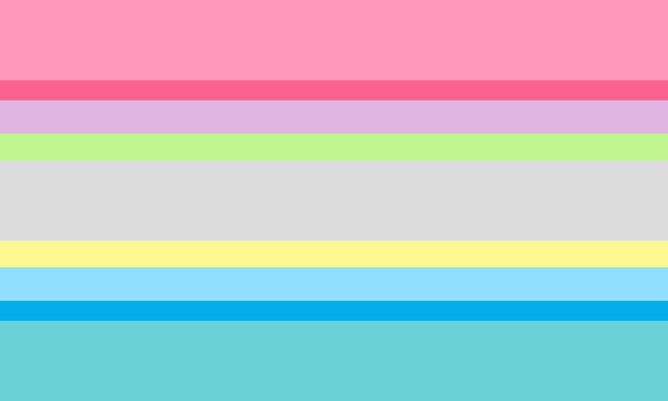
Gender Questioning Pride Flag Meaning
The pink, green, grey, yellow, and blue flag was created in 2017 by an artist named Roswell to represent the questioning community. This gender questioning flag utilizes colors from gender flags to symbolize different levels of the gender binary and non-binary. The pink and blue stripes of the questioning pride flag are the traditional male-female binary colors with the different shades representing the different levels of identity. The grey in the middle is the area for those questioning where on the spectrum they belong. Yellow and green stripes, on the other hand, are colors associated outside of the gender binary.
Gilbert Baker Flag – Original
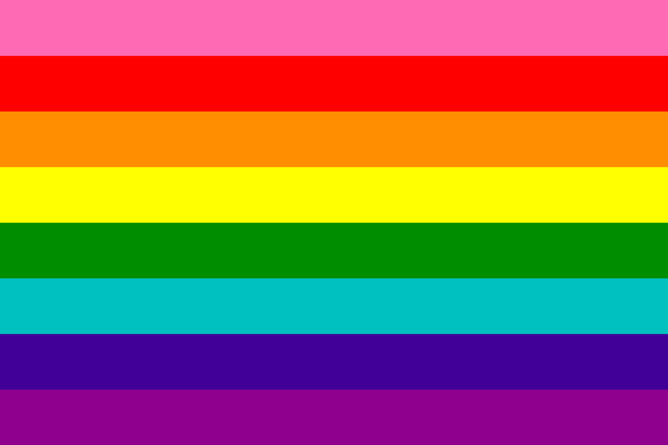
Gilbert Baker Pride Flag Meaning
This is the flag that started it all. The original Gay Pride flag was designed in 1977 by Gilbert Baker after he was approached by gay icon, politician Harvey Milk, to create a symbol for the gay community. Baker’s flag was made with eight stripes rather than the six-stripe design that the community uses today. The six colors on the modern design have the same meanings in Baker’s original flag, in addition to pink and turquoise stripes. Its rainbow design is believed to be inspired by “Over the Rainbow”, sung by Judy Garland, a favorite singer of the gay movement. Gilbert Baker’s Pride Flag was first showcased at the San Francisco Gay Freedom Day Celebration in 1978.
The flag gained popularity after the assassination of Harvey Milk in 1978 and the demand increased. Its pink and turquoise stripes, however, were removed because the fabrics were harder to obtain. Flags were easier to produce using the six-stripe design rather than the original eight colors. While the modern six-stripe design is the most common Gay Pride Flag used, the original design is still seen. Its popularity increased after Baker’s death in 2017.
Pink Stripe: Sex
Turquoise Stripe: Magic/Art
Graysexual Flag
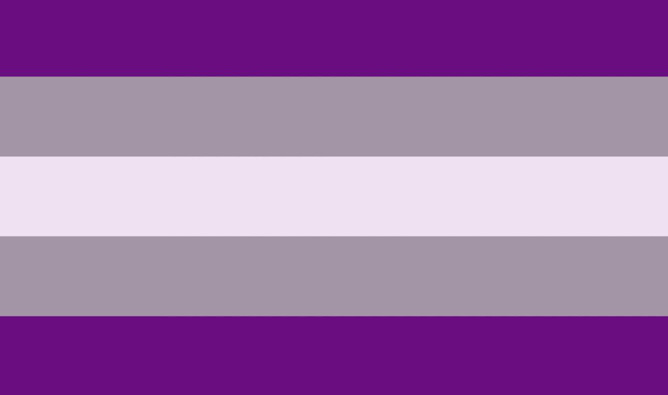
Graysexual Pride Flag
The purple, gray, and white Graysexual Pride Flag is also referred to as the Gray-A or Gray-Ace Flag. This flag is like the asexual flag but does not include the black. It is conveniently reversible so that the pattern will appear correct no matter which way it flies.
Purple: The graysexual community
Gray: Graysexuality
White: Supporters and partners who are not asexual
Hijra Flag

Hijra Pride Flag Meaning
Unlike others on the list of pride flags, the pink, white, red, and blue Hijra flag has a more cultural context, which is associated with South Asia. Such countries as India, Nepal, Pakistan, and Bangladesh issue passports to the Hijra community. This flag not only represents gender, but also spirituality.
Pink and Blue Stripes: Transgender people who identify as a binary gender
White Stripe: Non-binary genders
Red: Divinity
Intersex Flag
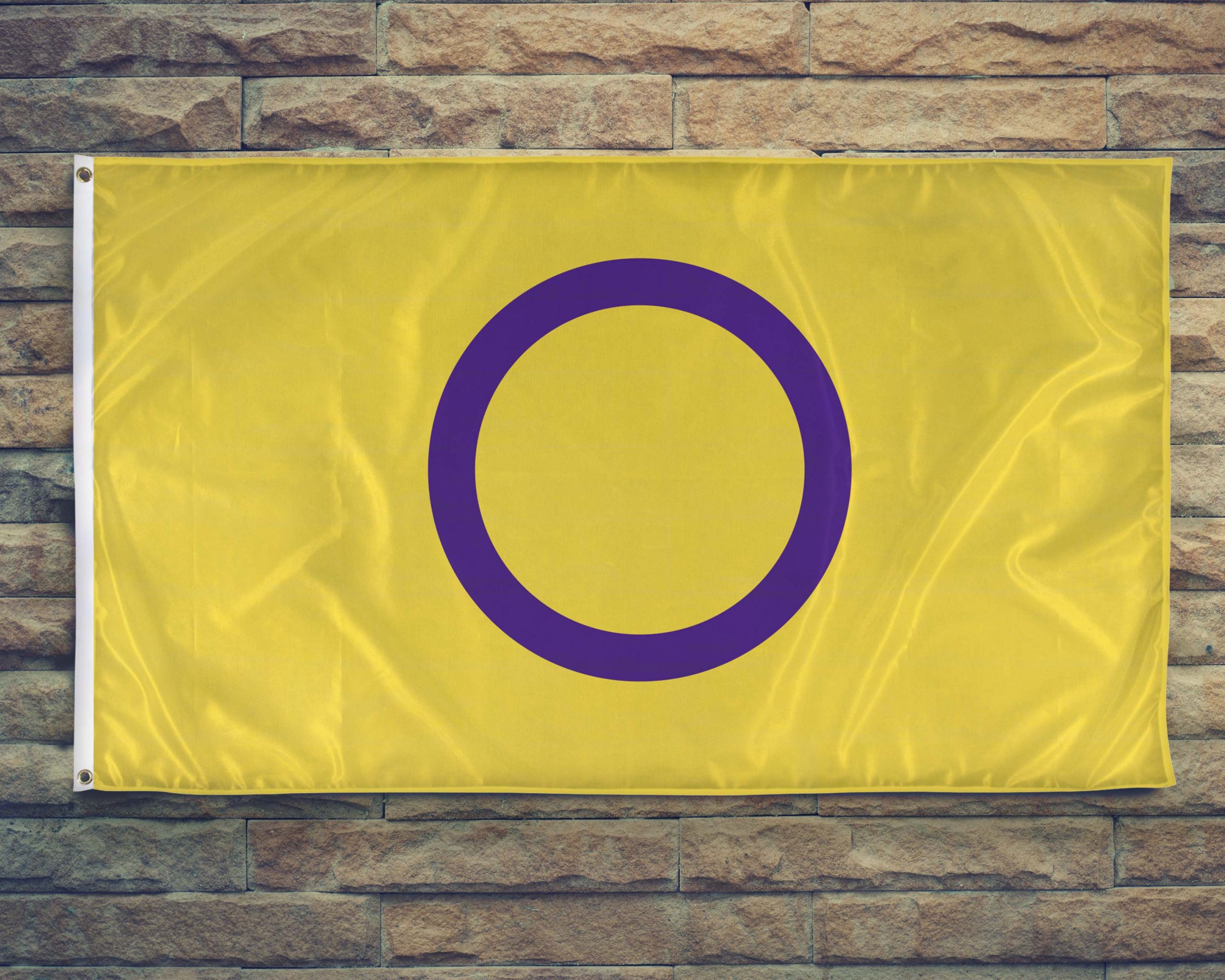

Intersex Pride Flag Meaning
This yellow and purple flag purposefully looks different compared to the other Pride flags. The flag was designed in 2013 by the Intersex International Australia group. Its artist was then co-chair of the organization, Morgan Carpenter, who wanted the flag to stand for wholesomeness. Carpenter said of the flag, “We are still fighting for bodily autonomy and genital integrity, and this symbolizes the right to be who and how you want to be.” It was also Carpenter’s intention to steer away from stereotypes and misconceptions when designing the flag. Another flag used to showcase intersex rights was created by Natalie Phox in 2009. Phox’s flag uses the more traditional stripe design with blue, pink, purple, and white colors. Carpenter’s, however, is still the go-to design for intersex people.
Yellow: Gender neutral color
Purple: Gender neutral color
Circle: Completeness and the possibilities of the intersex community
Intersex Progress Pride Flag
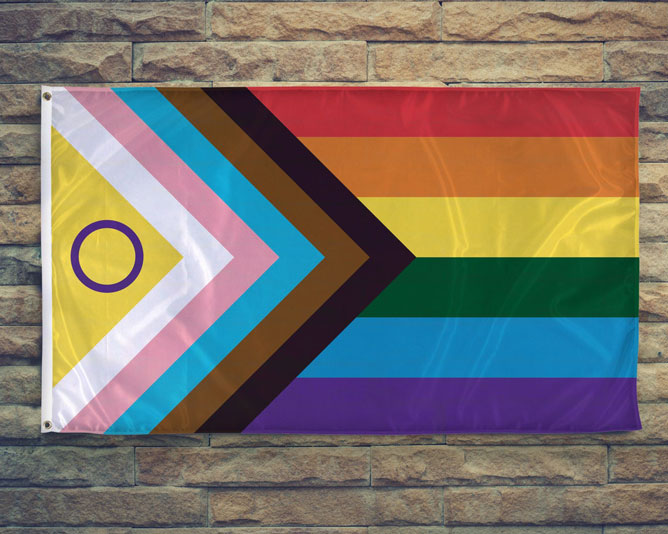

Intersex Pride Flag Meaning
The Progress Pride Flag has also recently been updated to include intersexuality. This Progress flag looks like the Quaser designed flag, except it has a yellow triangle with a purple circle on the far left to represent the Intersex flag. This addition is located next to the transgender stripes on the flag and takes the position that was previously held by the white triangle from the transgender colors. This new version of the flag was created by Valentino Vecchietti, who is intersex. The flag was showcased in UK by an advocacy group but has since gained attention on social media around the world. Including the intersex design in the Progress flag makes the term broader and more inclusive, especially since the intersex community often feels underrepresented in the LGBTQ+ movement.
Labrys Lesbian Flag
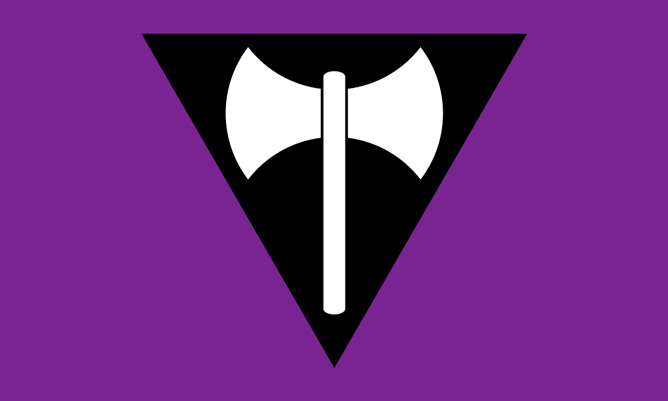
Labrys Lesbian Pride Flag Meaning
Sean Campbell, who is also credited with creating the Drag/Feather Pride Flag, designed the purple, black, and white Labrys Lesbian Pride Flag in 1999. Its design is not as popular as other flags in the lesbian community, however, which can be because it was created by a man rather than a lesbian. A labrys was an axe-like weapon used by Greek amazon women. The labrys is a symbol used by lesbian feminists dating back to the 1970s. Its black triangle is from the Nazi era when lesbians were forced to wear black triangles in concentration camps, like how gay men had to wear pink triangles. After that, lesbians reclaimed the black triangle and used it as a symbol of empowerment among the community, hence its inclusion in the flag. This flag has gained a bad reputation in recent years, because some anti-transgender women use it as their symbol. Some members of the community, however, do not want the negative use of the flag to stop it for being a defining symbol for the lesbian movement.
Leather Flag
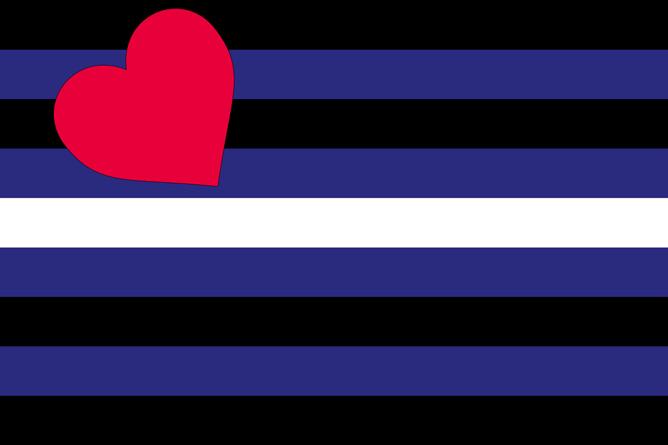
Leather Pride Flag Meaning
The best-known Fetish Flag is the black, blue, white, and heart flag for the leather community. While these kink flags are meant to represent the leather kink, they are also used for denim, bondage, uniforms, and other fetishes. This flag was designed by Tony DeBlase and it was first showcased at Chicago’s International Mr. Leather Competition in 1989. He did not intend the flag to be the symbol for the community, however. He used it as a placeholder in hopes that it would inspire artists to create an official flag for the community. The Leather Pride Flag, however, gained so much popularity that it became the permanent symbol of the group. DeBlase also wanted people to interpret what the flag meant on their own rather than have a universal answer to what each color represents.
Lesbian Flag
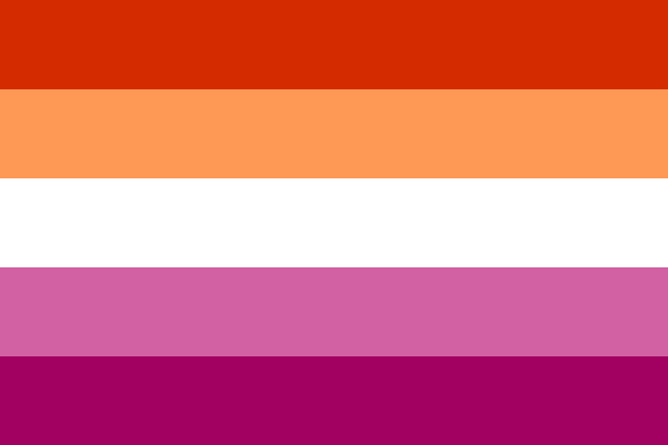
Lesbian Pride Flag Meaning
The orange, white, and purple flag was created in the mold of the Lipstick Lesbian Pride Flag, except with the addition of orange stripes. Its updated design was first seen on social media in 2018 and was intended to be a design for everyone, since the Lipstick Lesbian Pride Flag did not include butch lesbians. This flag was voted on by the community and has, therefore, become popular online.
Dark Orange Stripe: Gender nonconformity
Middle Orange Stripe: Independence
Light Orange Stripe: The lesbian community
White Stripe: Unique connections to womanhood
Light Pink Stripe: Serenity/peace
Middle Pink Stripe: Love/sex
Dark Pink Stripe: Femininity
Lipstick Lesbian Flag
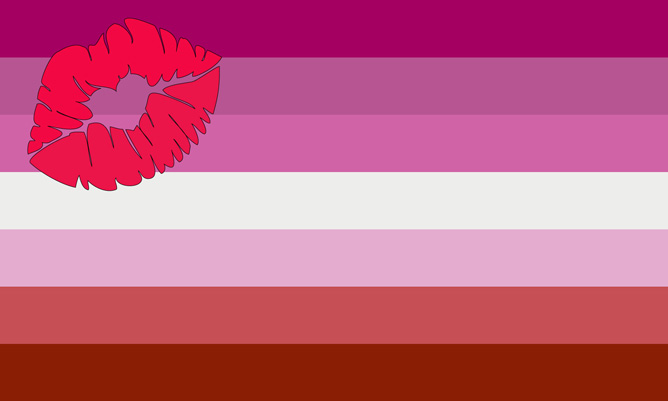
Lipstick Lesbian Pride Flag Meaning
Lipstick Lesbian is a term that refers to more feminine lesbians, hence the use of bright red, pink, white, and purple hues, which are traditionally girly colors. The kiss on the top left corner also adds a classic feminine touch. It was created in 2010 by Natalie McCray but has often been replaced by a more modern design without the lipstick mark. This is because many lesbians refuse to use the flag due to McCray’s biphobic, transphobic, and racist comments on her blog. Its design also does not include butch lesbians, causing the butch group to create their own version of the flag.
Maverique Flag
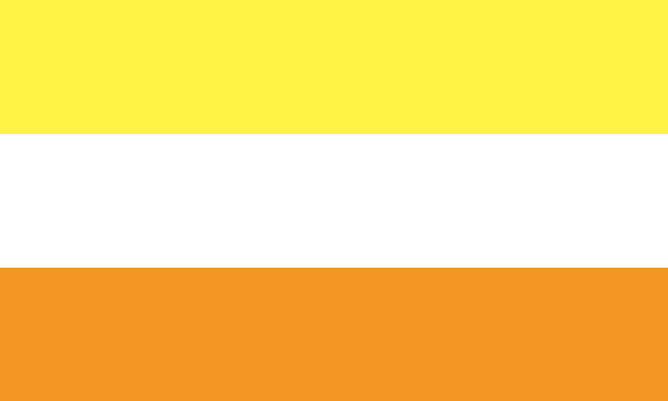
Maverique Pride Flag Meaning
The yellow, white, and orange flag uses colors that aren’t associated with traditional genders in order to create a unique color scheme to match how the maverique community feels they have a gender, but one that is different from male and female binary.
Yellow Stripe: Primary color separate from other colors, like how the maverique identity is separate from male and female
White Stripe: Independence from the traditional male and female binary, a blank identity slate
Orange Stripe: Color not associated with gender that represents the conviction maveriques have for their identity
More Color More Pride Flag or Philadelphia Pride Flag
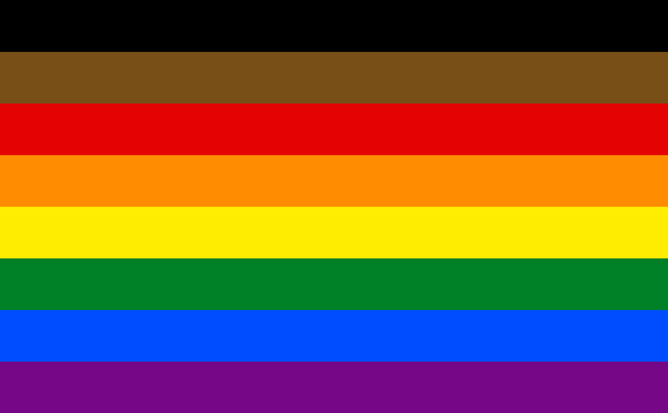
More Color More Pride Flag or Philadelphia Pride Flag Meaning
The activist group More Color More Pride had Philadelphia add two black and brown stripes to the classic Rainbow Flag in 2017 to celebrate people of color in the LGBTQ+ community. This new rainbow flag was officially created by the PR agency, Tierney. It was met with some criticism, as some white men claimed that the traditional six-color flag included all colors, but the flag still managed to make its splash in pop culture and doesn’t seem to be going anywhere. Its popularity was proven when star Lena Waithe wore a beautiful cape of the flag colors to the 2018 Met Gala. The flag is sometimes referred to as QPOC (Queer People of Color).
Neutrois Flag
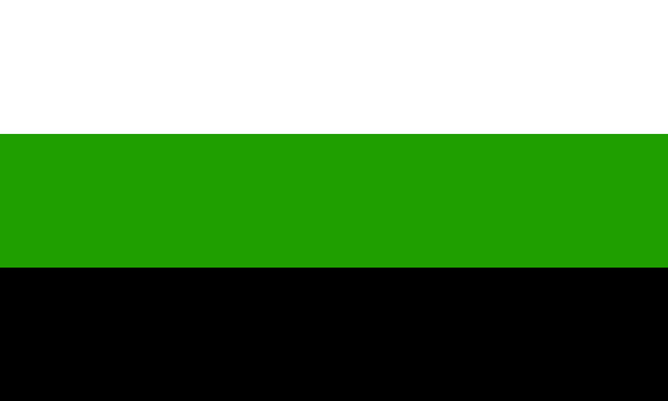
Neutrois Pride Flag Meaning
This white, green, and black flag is another example of a Pride flag that uses gender-neutral or genderless colors to convey its message.
White Stripe: Neutral or unidentified gender
Chartreuse Green Stripe: The opposite of lavender, which is a mix between the gendered blue and pink. This color, therefore, represents not identifying as male, female, or a mix between the two.
Black Stripe: Agender or genderless
Non-Binary Flag
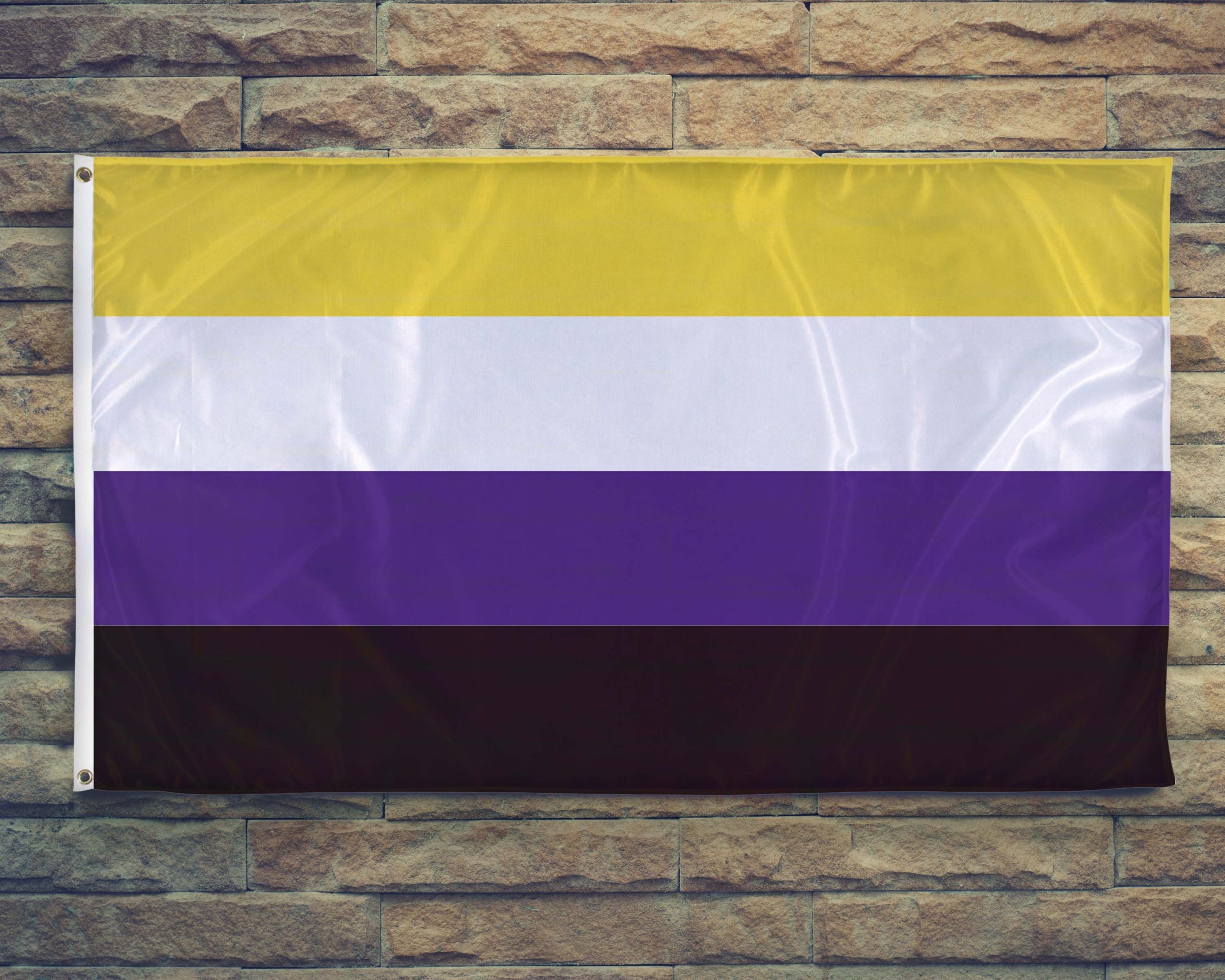

Non-Binary Pride Flag Meaning
The yellow, white, purple, and black flag associated with non-binary people was created in 2014 by Kye Rowan, who was only seventeen at the time. It was created because many non-binary people felt that the genderqueer flag was too broad. They, therefore, wanted a flag specific to their community. Each color stripe represents a different part of the non-binary group.
Yellow Stripe: People who identify outside of the gender binary
White Stripe: People who identify as many or all genders
Purple Stripe: The combination of male and female genders
Black Stripe: Agender people
Omnisexual Flag

Omnisexual Pride Flag Meaning
Since omnisexuality represents attraction to all genders, the colors represent the wide spectrum of sexual attraction.
Pink Stripes: Attraction to femininity
Black Stripe: All other genders outside of the binary
Blue Stripes: Attraction to masculinity
Pangender Flag
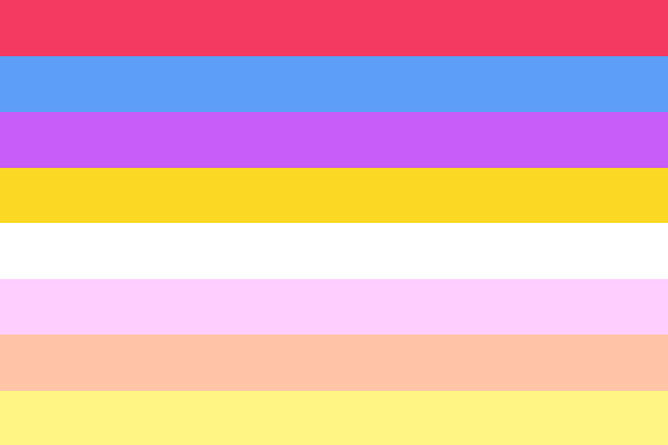
Pangender Pride Flag Meaning
The Pangender Pride Flag is one of the most colorful flags of the LGBTQ+ community. Its use of different colors represents the wide gender spectrum.
White Stripe: The combination of all genders
Yellow Stripes: Genders outside of the male-female binary
Red Stripe: Moving between male and female genders
Violet-Pink Stripes: Combination of the gender binary
Pansexual Flag
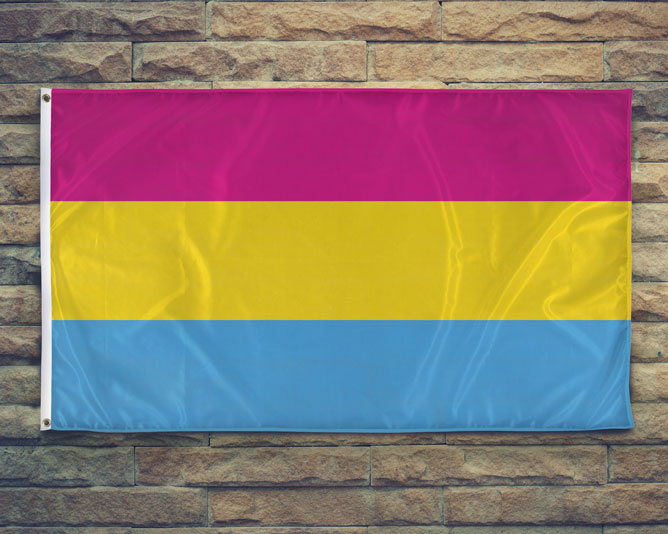

Pansexual Pride Flag Meaning
The Pansexual Pride Flag consists of pink, yellow, and blue stripes. It was first created on the internet in 2010, but it is not clear who the original creator was. The purpose of the pink, blue, and yellow flag was to separate the pansexual community from the bisexual community because the two are often confused with one another. Click here to get your very own Pansexual Pride Flag.
Pink Stripe: Attraction to females
Yellow Stripe: Attraction to people who do not identify as either male or female
Blue Stripe: Attraction to males
Pocket Gender Flag
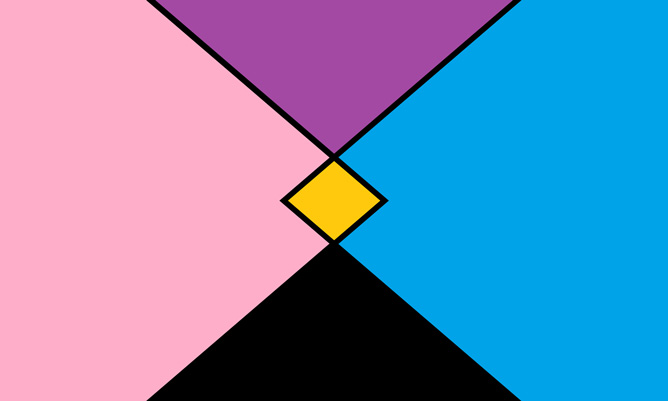
Pocket Gender Pride Flag Meaning
The pink, purple, blue, black, and orange Pocket Gender Pride Flag was created by Alex Stowe. This flag uses triangles in its design rather than the traditional stripes. It was Stowe’s intention for the flag to show the different levels of gender.
Pink Triangle: Femininity
Purple Triangle: A combination of the gender binary, as well as the genderless
Blue Triangle: Masculinity
Black Triangle: A combination of genders or genderlessness
Orange Diamond: Maverique, a non-binary group
Polyamorous Flag
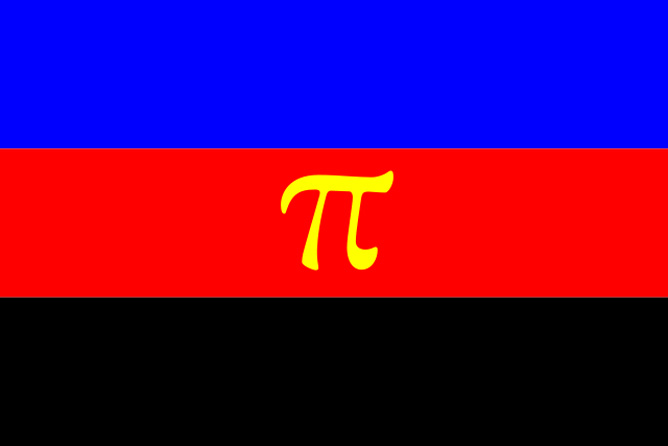
Polyamorous Pride Flag Meaning
This blue, red, and black Polyamorous Pride Flag with the pi symbol was designed by Jim Evans in 1995. Evans’s pi symbol was added because it is the first letter in the Greek alphabet for polyamory. Its popularity grew as the internet grew. An alternative version of the flag, however, was created by the University of Northern Colorado Poly Community, which replaces the pi graphic with infinity hearts. The hearts symbol is popular among polyamorists.
Blue Stripe: Honesty from all partners in a relationship
Red Stripe: Passion
Black Stripe: Solidarity with those who must hide their polyamorous relationships
Pi or Infinity Hearts: The pi symbol is used to represent emotional attachment while the hearts symbol stands for infinite love for more than one partner
Polysexual Flag
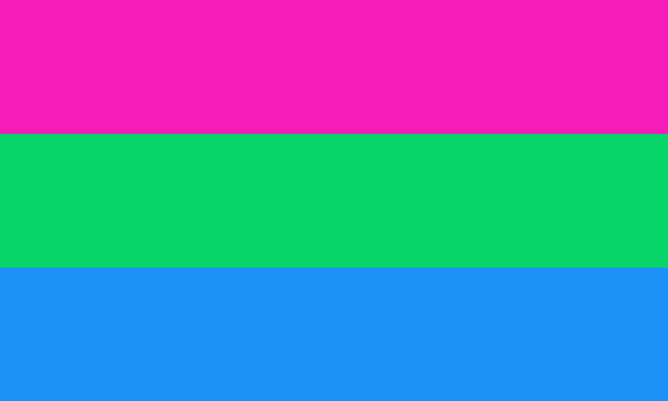
Polysexual Pride Flag Meaning
Created to be like the bisexual and pansexual flags, the Polysexual Pride Flag similarly includes three stripes, but with pink, green, and blue colors. The flag was designed by Tumblr user Samlin in 2012. The user was inspired by the layout of the bi and pan flags because “they’re all under the multisexual umbrella.” Samlin created the flag because, before then, there was no flag to represent the polysexual community.
Pink Stripe: Attraction to females
Green Stripe: Attraction to people who fall outside of the binary
Blue Stripe: Attraction to males
Progress Flag
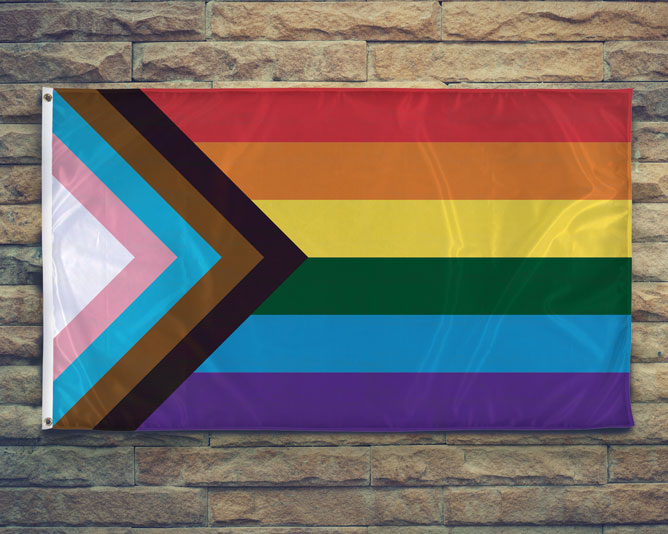

Progress Pride Flag Meaning
This updated version of the classic Rainbow Flag was crafted by graphic designer Daniel Quaser in 2018, who is both genderqueer and non-binary. The flag was designed to include the progressive More Pride More Color/Philadelphia Pride Flag colors and the Transgender Pride Flag colors. In addition, the chevron style of the new colors represents progress. Quaser said, “When the Pride flag was recreated in the last year to include both black/brown stripes as well as the trans stripes included this year, I wanted to see if there could be more emphasis in the design of the flag to give it more meaning”. Would you like your own Progress Pride Flag? Click here to purchase one from Vispronet.
Rubber Flag
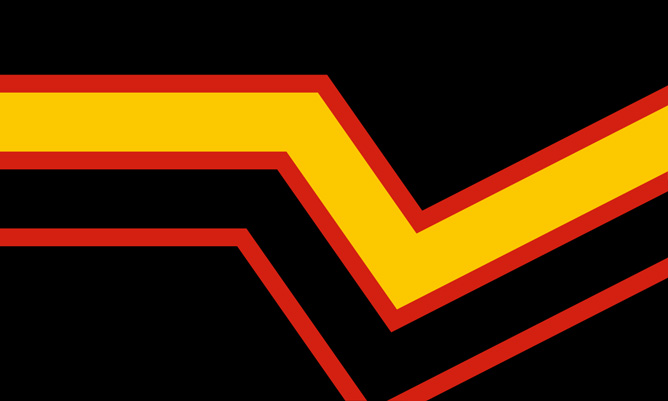
Rubber Pride Flag Meaning
Another popular flag of the fetish community is the red, yellow, and black Rubber Pride Flag. The flag was created by Peter Tolos and Scott Moats in 1995 for the rubber and latex kink community. Its designers described the flag “as a means to identifying like-minded men and [it] reflects the sensory, sensual, and mental passion we have for rubber.” Like other kink groups, this flag similarly represents both the heterosexual and the LGBTQ+ community.
Black: The look and feel of shiny black rubber
Red: Blood-like passion for rubber and the community
Yellow: The drive for rubber play
Chevron: Kinks
Transgender Flag
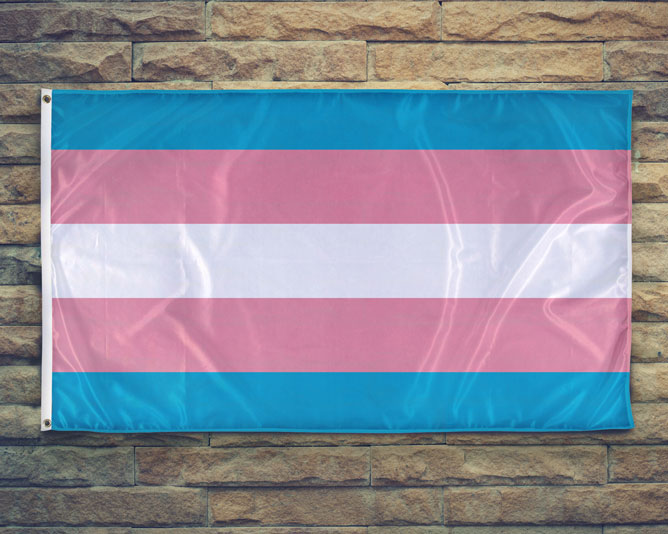

Transgender Pride Flag Meaning
The blue, pink, and white Transgender Pride Flag was designed in 1999 by an openly transgender Navy veteran, Monica Helms. She was encouraged to create the flag by Michael Page, who designed the Bisexual Pride Flag. After that, it was flown at Phoenix’s Pride Parade in 2000, but it officially became popular around 2013. Helms’s original Trans Pride Flag can be seen in the Smithsonian Natural Museum of American History. This flag is reversible because, according to Helms, “no matter which way you fly it, it is always correct, signifying us finding correctness in our lives.” If you are looking for your own Transgender Pride Flag, purchase one here.
Pink Stripe: Traditional color for baby girls
White Stripe: Intersex, transitioning, or other gendered people
Blue Stripe: Traditional color for baby boys
Trigender Flag
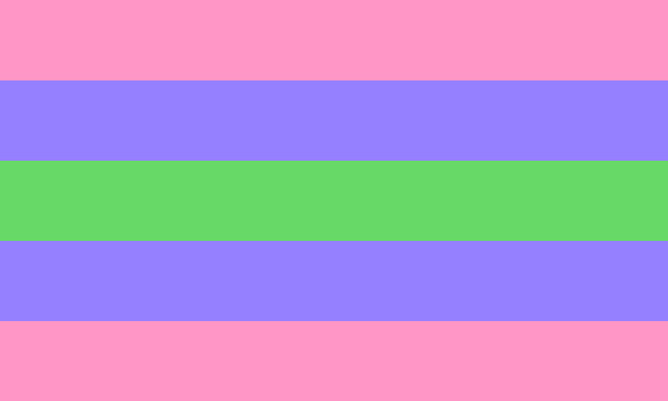
Trigender Pride Flag Meaning
This Pride flag includes pink, blue, and green color stripes, which are a mixture of colors associated inside and outside the gender binary.
Pink Stripes: Feminine genders
Blue Stripes: Masculine genders
Green Stripe: Non-binary genders
Twink Flag
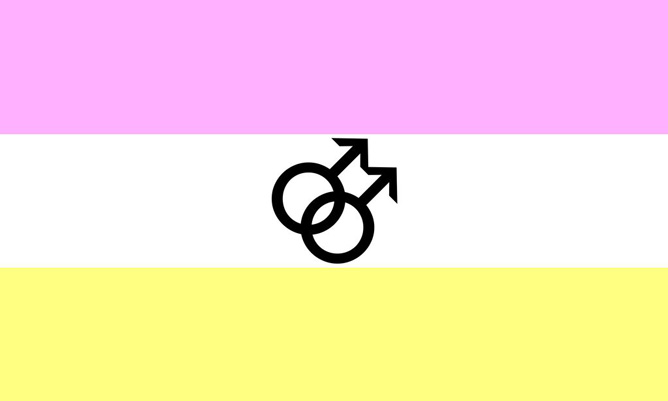
Twink Pride Flag Meaning
This pink, white, and yellow sexuality flag is seen more online than in public. The flag does not have a set definition of what each color means, but it is argued that the pink color celebrates the more “effeminate” traits associated with the subculture. Its interlocking male symbols in the center of the flag is similarly used to represent male attraction to other males. While the Twink subculture is large and popular, the flag has not received as much attention as another subculture flag, the Bear Pride Flag.
Two-Spirit Flag
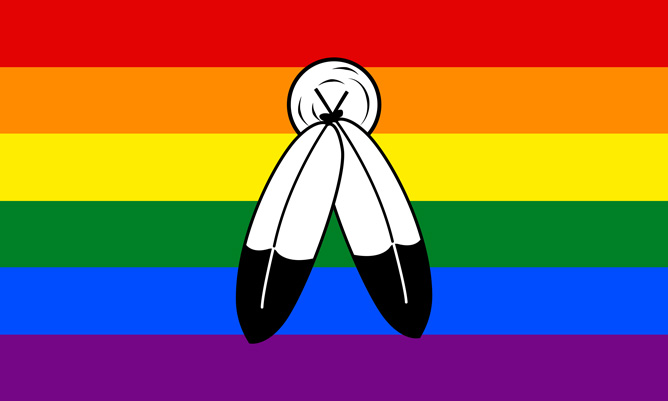
Two-Spirit Pride Flag Meaning
The Two-Spirit culture is not, as some would believe, the gay community among Native Americans. It is something more cultural among indigenous people, like the Hijra group in South Asian society. This flag, however, does take its inspiration from the famous Rainbow Pride Flag. Cultural context is added by placing a double feather symbol in the middle to stand for the Native American community.
If you are interested in sexuality flags and gender nonconforming flags printed in different formats, all LGBT flag designs can be printed as feather banners, with your choice of shape and size. Custom feather banners are an excellent way to attract more attention to your cause, and are more eye-catching compared to 3×5 flags, especially if you are exhibiting at venues like parks, shows, fairs, and festivals. Our feather banners fully showcase the rich and contrasting colors of these 3×5 sexuality flags and are fully customizable so you can add in whatever design elements you would like.
Sexuality Flags Sources:
- Flags of the LGBTIQ Community
https://outrightinternational.org/content/flags-lgbtiq-community - The Complete Guide to Every Queer Pride Flag
https://www.pride.com/pride/queer-flags - Pride flags: All of the flags you might see at Pride and what they mean
https://www.thepinknews.com/2024/06/04/all-of-the-flags-you-might-see-at-pride-and-what-they-mean/ - A Complete Guide to All the LGBTQ+ Flags & What They Mean
https://www.refinery29.com/en-us/lgbt-pride-flags-meaning - Pride Flags
https://www.unco.edu/gender-sexuality-resource-center/resources/pride-flags.aspx - 13 LGBTQ Pride Flags and What They Stand For
https://www.seventeen.com/life/g32577915/lgbtq-pride-flags/ - Pride Flags
https://www.tripridetn.org/pride-flags/

